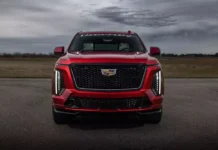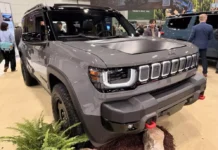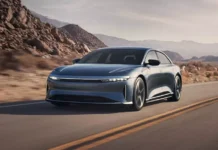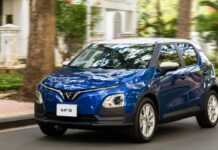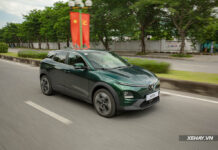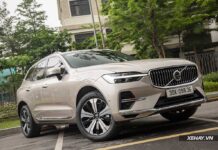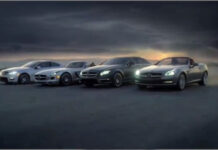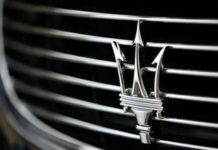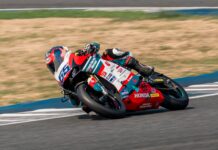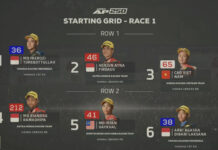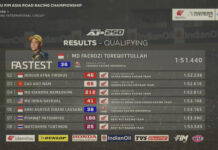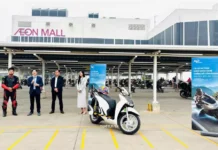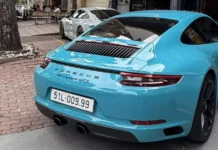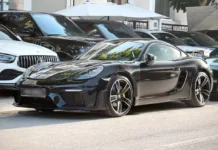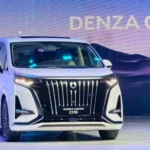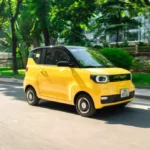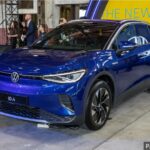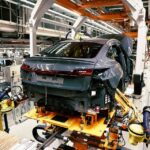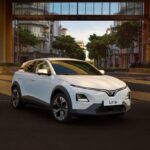Unlike many other major markets, China groups electric vehicles (EVs) and hybrids into the same category called “new energy vehicles.” Within this category, brands compete by offering a diverse range of electrified models with longer ranges for consumers.
At the Shanghai Auto Show 2025, which opened last week, Zeekr – a subsidiary brand of Geely – introduced its new plug-in hybrid electric vehicle (PHEV) SUV called the 9X. This vehicle can run entirely on electricity for up to 400 kilometers before switching to the gasoline engine. This range is almost on par with many pure electric vehicles and far surpasses the range of typical plug-in hybrids seen in the US, Europe, and other markets.

Chinese automakers are rushing to launch hybrids with longer ranges to cater to customer demands. Pictured here is the new Zeeker 9X.
Chinese automakers are also making significant strides in the extended-range electric vehicle (EREV) segment. These vehicles use a small gasoline engine solely to charge the battery and extend the electric range.
Last year, sales of EREV and PHEV vehicles in China grew faster than pure electric cars. This pushed the electrified segment to account for about half of the total vehicle sales in the country, according to data from the China Passenger Car Association.
Specifically, EREV sales increased by 79%, reaching 1.2 million units. PHEV sales grew by 76% to 3.4 million units, while pure electric cars saw a 23% growth, reaching 6.3 million in sales.
In the first quarter of this year, pure electric cars continued to grow faster than the two hybrid segments and led the new energy vehicle category in the Chinese market. However, with a trend spreading in China and globally, many traditional automakers have returned to a strategy of including hybrids in their portfolios instead of solely focusing on pure electric vehicles as before.
Volkswagen is developing a new platform for both electric and EREV vehicles to counter its declining sales in China. Ralf Brandstaetter, a member of Volkswagen’s board of management, stated that flexibility in powertrains is key to regaining their competitive edge.
Mercedes-Benz CEO, Ola Kaellenius, also acknowledged that hybrids are “clearly a trend in China” and predicted they would “coexist with electric cars for a longer period.”
A Transitional Technology?
Some automakers, such as Tesla, argue that hybrids are only a transitional technology that slows the shift to electric vehicles, which is necessary to combat climate change. Many environmentalists in the US and Europe share this view.
Some Chinese electric vehicle manufacturers also doubt that hybrids will be around for the long term, especially considering China’s significant investment in electric vehicle charging infrastructure. William Li, CEO of Nio, commented, “It doesn’t make sense.”
However, many Chinese automakers are willing to cater to consumer demands amid the ongoing price war that continues to pressure profits. Plug-in hybrids also help them circumvent tariff barriers in Europe, which currently taxes Chinese-made pure electric and EREV vehicles. Lynk & Co, another Geely subsidiary, will launch the 08 plug-in hybrid SUV in the European market in June 2025, with a pure electric range of 200 kilometers, the longest in its segment.
Felix Kuhnert, an expert at PwC Germany, noted that the Chinese automotive industry is “less technologically conservative” than its global rivals, stating, “If customers want electric cars to go further, then make that kind of car.” This philosophy is shared by Leapmotor, a Chinese electric car manufacturer that has launched four EREV models. Despite CEO Zhu Jiangming’s belief that current electric cars with a 500-kilometer range are sufficient, the company still offers EREVs as an option for those willing to pay extra for reduced range anxiety.
According to Leapmotor, EREVs are a choice for the luxury segment, where consumers are not hesitant to pay an additional 20,000 yuan (approximately $2,744) for peace of mind.
A Wave of Hybrid Launches
According to data from JATO Dynamics, in 2024, Chinese automakers launched 16 new EREV models and 37 new PHEV models, while the corresponding figure for pure electric vehicles was only 32.
Speaking to Reuters, a representative of a major automaker predicted that EREV and PHEV sales would account for about 35% of China’s vehicle sales, while pure electric cars would make up around 45%.

Predicted growth rates for electric and hybrid vehicles in the Chinese market.
CATL, China’s leading electric vehicle battery manufacturer, has also invested in this segment. In October 2024, CATL launched its first battery dedicated to hybrids, offering a range of up to 400 kilometers. This battery has been adopted by several brands, including Li Auto, and is expected to be featured in nearly 30 models from major automakers such as Geely and Chery.
Bo Yu, an expert from JATO Dynamics, stated that Chinese automakers would continue to invest in and innovate in the hybrid segment in the near future. “We will see more such models,” she asserted.
BYD’s Strategic Shift
For BYD, plug-in hybrid electric vehicles are the new silent sales force. Although known as one of the world’s leading pure electric vehicle manufacturers, BYD actually sells more PHEVs. This detail is crucial as the company aims to expand its market share in Europe, where not all new car buyers are ready to completely abandon fossil fuels.
China remains BYD’s largest market, but the company has made it clear that its next target is global expansion. For BYD to become a formidable competitor to established brands in Europe, attractive electric car models are not enough. A stronger dealer network and, more importantly, a more diverse PHEV portfolio, are crucial missing pieces.
Currently, BYD’s PHEV offerings in Europe are limited. The BYD Seal DM-i is the only PHEV model the company is currently offering in the region. However, that is about to change.
At a recent event in Stuttgart, Germany, Maria Grazia Davino, BYD’s regional director responsible for several Central European markets, confirmed plans to bring at least two more PHEV models to Europe in 2025. Germany is one of the company’s main target markets.

BYD will bring more PHEVs to the European market this year.
“Not everyone is ready to switch to electric. We need to have other options to convince customers,” Davino shared with Reuters. “Every month, we find the best balance between customer demand and distribution efficiency. In the near future, we will have two pillars: one is electric and one is DM-i.”
Currently, BYD faces import tariffs from Europe on vehicles produced in China. However, the company has taken steps to minimize the impact. New manufacturing plants in Hungary and Turkey will handle most of the exports to Europe, helping BYD reduce additional costs.
While sales in Europe have not yet met expectations, BYD has seen signs of improvement. In the first quarter of 2025, the company sold more than 37,000 vehicles in Europe, an increase of about 8,500 units compared to the same period in 2024.
In addition to expanding its PHEV portfolio in Europe, BYD has also launched a new premium brand called Denza. Positioned as a rival to brands like Mercedes-Benz, BMW, and Audi, Denza will start with the Z9 GT, a competitor to the Porsche Taycan Sport Turismo. Subsequently, the company will introduce the Denza D9, a large MPV, in the European market.
“The ‘Toyota Alphard’ of China”: Denza D9 Reigns Supreme in Sales in the Largest Automotive Market in Southeast Asia
The Denza D9 is an exceptional vehicle that graced the shores of Vietnam during the VMS 2024 exhibition last October. This stunning car turned heads and captivated audiences with its sleek design and innovative features. As a showcase piece, it represented the pinnacle of automotive engineering and offered a glimpse into the future of transportation. The Denza D9 is more than just a car; it’s an experience that leaves a lasting impression.
The Future of Electric Vehicle Charging: TMT Motors’ Public Charging Station Network in Vietnam
TMT Motors is embarking on an ambitious journey to revolutionize electric vehicle charging infrastructure in Vietnam. With a bold vision, the company aims to establish 30,000 charging stations across the country within the next five years, ending 2029. This transformative initiative underscores TMT Motors’ commitment to fostering sustainable mobility and shaping a greener future for Vietnam.







